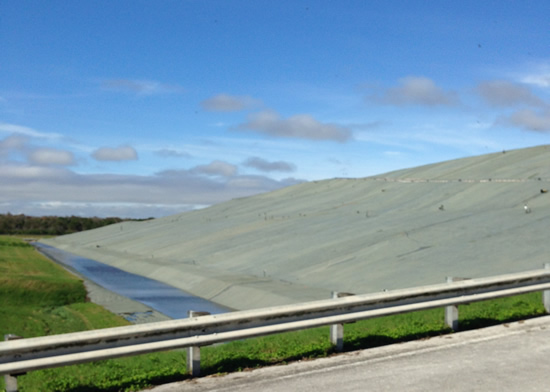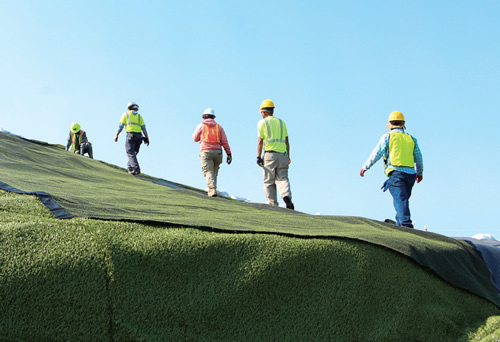“The utilization of alternative final cover systems is an area of growing interest among landfill owners who want to avoid the problems that are associated with traditional final cover systems,” writes the Solid Waste Association of North America. “The acceptance of state regulators of these alternative systems is a key issue in their future consideration and deployment.”

In a new report, SWANA offers data and support on the use of exposed geomembrane final cover systems and engineered turf covers (e.g., ClosureTurf® and LiteEarth™). The PDF report is available for purchase on SWANA’s website.
SEE ALSO: 13-Year Study of Exposed, Green Geomembrane Cover
ALTERNATIVE FINAL COVER REPORT
The description of the file goes on to note that, “The [alternative final cover system] report provides up-to-date performance data and other relevant information on these systems that will enable solid waste managers to evaluate their potential and encourage state regulators to approve their utilization.”

SWANA’s Applied Research Foundation led the investigation, with its director Jeremy O’Brien highlighting the significant potential of these systems to address concerns of landfill regulators and operators alongside significant benefits.
“These identified concerns include the effect of landfill settlement on the final cover integrity during the post-closure care (PCC) period, loss of landfill airspace to cover soil, veneer slope stability, soil erosion, and the continual need to mow and maintain the cover vegetation,” said O’Brien.
Exposed geomembrane cover (EGC) systems do not install the vegetative, topsoil, infiltration, and drainage layer components otherwise found in the EPA’s prescribed final cover systems.
Engineered turf cover (ETC) systems utilize an engineered turf layer to cover and protect the underlying geomembrane from UV radiation and oxidation and use a sand ballast to mitigate wind and landfill gas pressure issues.

The report emphasizes the evaluation of the service life of the cover systems in comparison to a 30-year post-closure care period and the estimated 450-year service life of the EPA-prescribed final closure system. Laboratory and field testing results are discussed in the report and reveal service lives ranging from about 100 years for the EGC to roughly 200 years for the ETC.
“The report indicates both alternatives have real potential to meet and even exceed federal closure requirements while also offering landfills flexibility to better address specific, on-site issues and optimize their approach,” said O’Brien.
Purchase a copy of “Alternative Final Cover Systems and Regulatory Post-Closure Care” at SWANA’s website.











